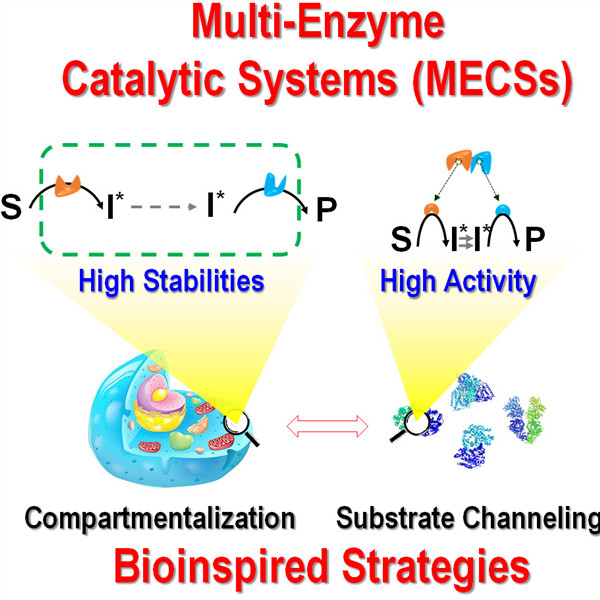Nowadays, clean and sustainable technologies are urgently required to settle the environmental issues. Enzyme cascade reaction is a green and efficient strategy to produce chemicals, fuels and materials. However, low stability and activity of in vitro enzyme cascades hinder their further application. New strategies developed in this research field may offer us some potential solutions.

Associate Professor Shi Jiafu from School of Environmental Science and Engineering of Tianjin University discusses the bioinspired construction of multi-enzyme catalytic systems on Chemical Society Reviews (2018, 47, 4295-4313).
https://pubs.rsc.org/en/content/articlelanding/2018/cs/c7cs00914c#!divAbstract
Enzyme catalysis, as a green, efficient process, displays exceptional functionality, adaptivity and sustainability. Multi-enzyme catalysis, which can accomplish the tandem synthesis of valuable materials/chemicals from renewable feedstocks, establishes a bridge between single-enzyme catalysis and whole-cell catalysis. Multi-enzyme catalysis occupies unique and indispensable position in biological reaction realm for energy and environmental applications. Two complementary strategies, i.e., compartmentalization and substrate channeling, are evolved by living organisms for implementing the complex in vivo multi-enzyme reactions (MERs), which have been applied to construct multi-enzyme catalytic systems (MECSs) with superior catalytic activity and stabilities in practical biocatalysts.
This review presents the recent advances and future prospects in this burgeoning research area, stressing the features and applications of the two strategies for constructing MECSs and implementing in vitro MERs. The concluding remarks are presented with a perspective on the construction of MECSs through rational combination of compartmentalization and substrate channeling.
The tutorial review titled “Bioinspired Construction of Multi-Enzyme Catalytic Systems” was published in Chemical Society Reviews (Impact Factor = 40.182). The first author is Dr. Shi Jiafu who has been supported by National Natural Science Foundation (21776213, 21406163). The PhD. student Wu Yizhou is the co-first author. The corresponding author is Professor Jiang Zhongyi who has been supported by the Outstanding Young Investigator Award. Other authors are Zhang Shaohua, Tian Yu and Associate Professor Yang Dong.
By: Shi Jiafu, School of Environmental Science and Engineering
Editor: Qin Mian and Keith Harrington






